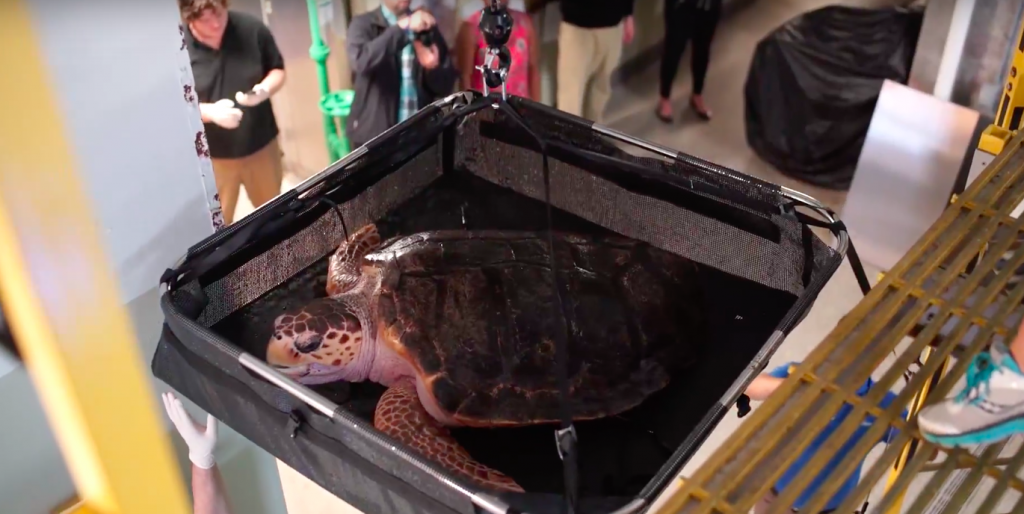An injured Loggerhead sea turtle has been given a new lease of life thanks to a 3D printed brace manufactured by the Geisel Library Digital Media Lab at UC San Diego and fitted by staff at the Birch Aquarium at the Scripps Institute of Oceanography.
The brace, apparently the first of its kind in the world, will both plug the gap in the Loggerhead’s shell and provide her with support, preventing the shell from curving downwards with growth, and halting any further complications from her injuries sustained in the wild.
Tragedy to recovery
The juvenile female Loggerhead sea turtle was rescued after being found injured in a New Jersey power plant cooling canal. She was given a permanent home at the Birch Aquarium, part of the Scripps Institution of Oceanography at UC San Diego.
As a result of prior trauma or congenital defects, she has a large gap in her shell along with an abnormally curved spine and a paralysed set of back flippers. Despite recovering from her injuries, the weight she regained only increased the risk posed by the defects.
“Without our intervention, the sea turtle could have gastrointestinal and urogenital systems complications,” explained Jenn Nero Moffatt, senior director of animal care, science and conservation at the aquarium.

3D printing rehabilitation
Scans of the sea turtle were initially taken at UC San Diego’s Thornton Hospital on two occasions to monitor growth. Experts from the Geisel Library were then asked to create a brace that would, according to Moffatt, “prevent further complications and keep her as healthy and happy as possible.”
The technicians at the Geisel Library lab, managed by Scott McAvoy, combined the CT scans with their own 3D renders to design and manufacture a brace that was comfortable for the sea turtle. The brace was 3D printed from rigid white plastic and customized to fit the sea turtle’s shell.
Primarily sealing the gap in her shell, it includes a ratcheting plastic cable with two fasteners, which will provide strength, corrective support and pressure as she grows. An attached velcro neoprene weight pocket separately provides neutral buoyancy while resting.
Two-part marine epoxy was used to stick the parts 3D printed components together and to the sea turtle. These can be safely removed when they need to be replaced as she grows. The Loggerhead sea turtle will continue to live in the Birch Hall of Fishes Magdalena Bay habitat.

Other successes in reptilian rehabilitation
3D printing has been used by other veterinary surgeons and technicians to help turtles and tortoises recover from injuries.
In 2015, tortoises Boris and Cleopatra received a 3D printed facial prosthesis and shell respectively. Earlier this year, surgeons from the University of Tennessee created a 3D printed facial prosthesis for Patches, a 10-year-old female black-breasted leaf turtle.
Nominations for the second annual 3D Printing Industry Awards are now open. Make your selections now.
For more information on 3D printing and animals, subscribe to our free 3D Printing Industry newsletter, follow us on Twitter, and like us on Facebook.
Featured image shows the Loggerhead sea turtle being fitted with the brace underwater. Photo via Birch Aquarium.

